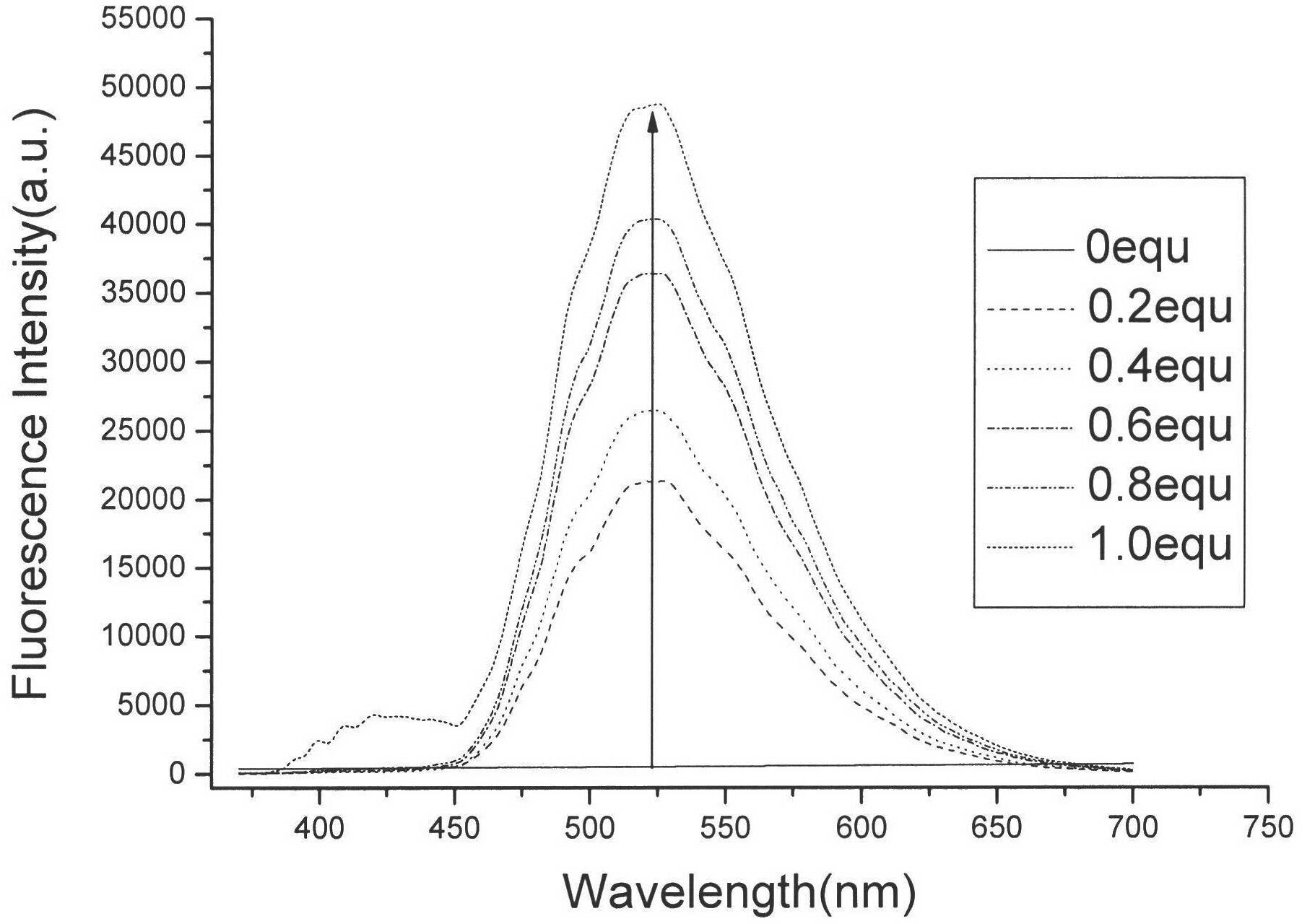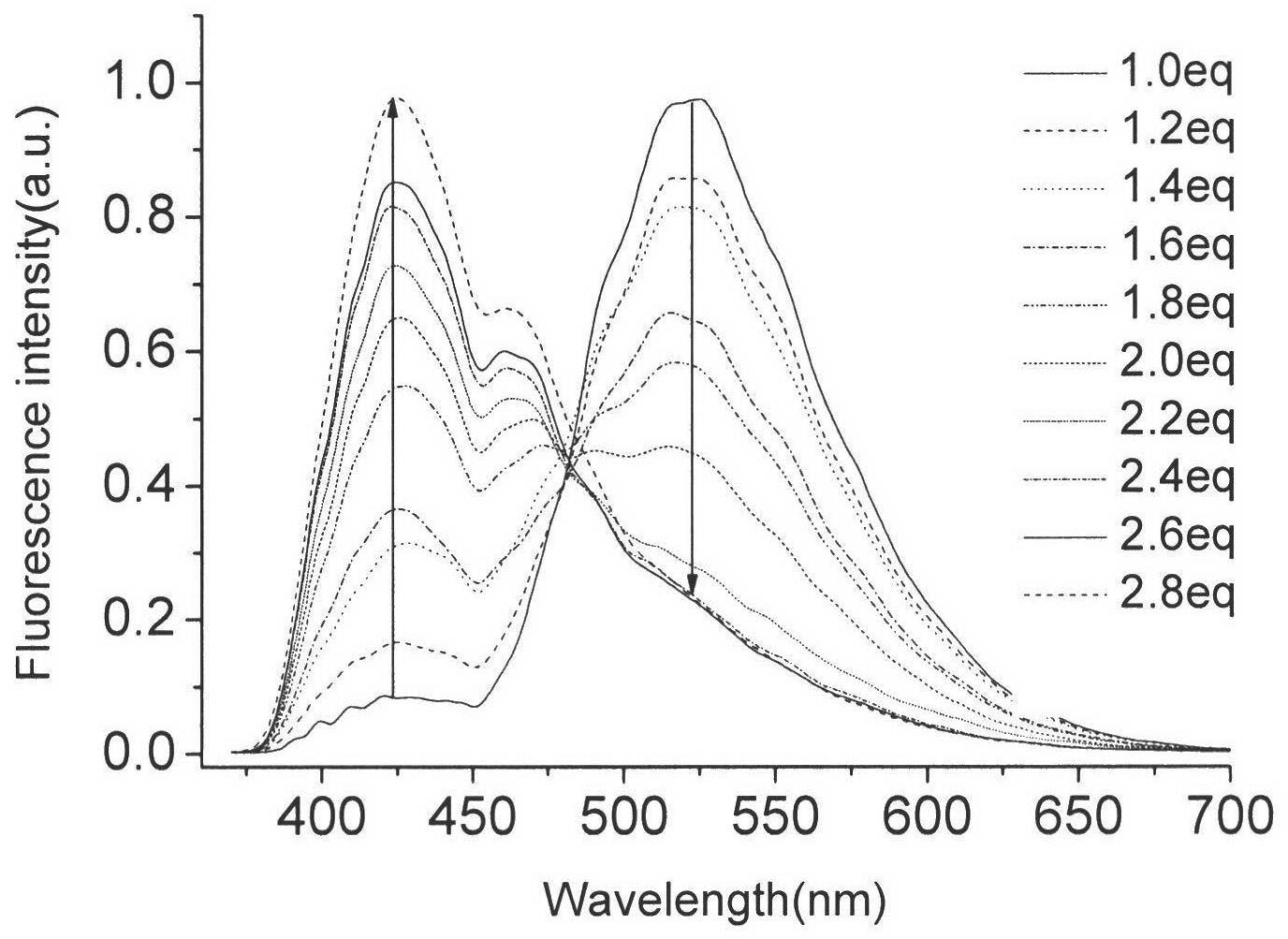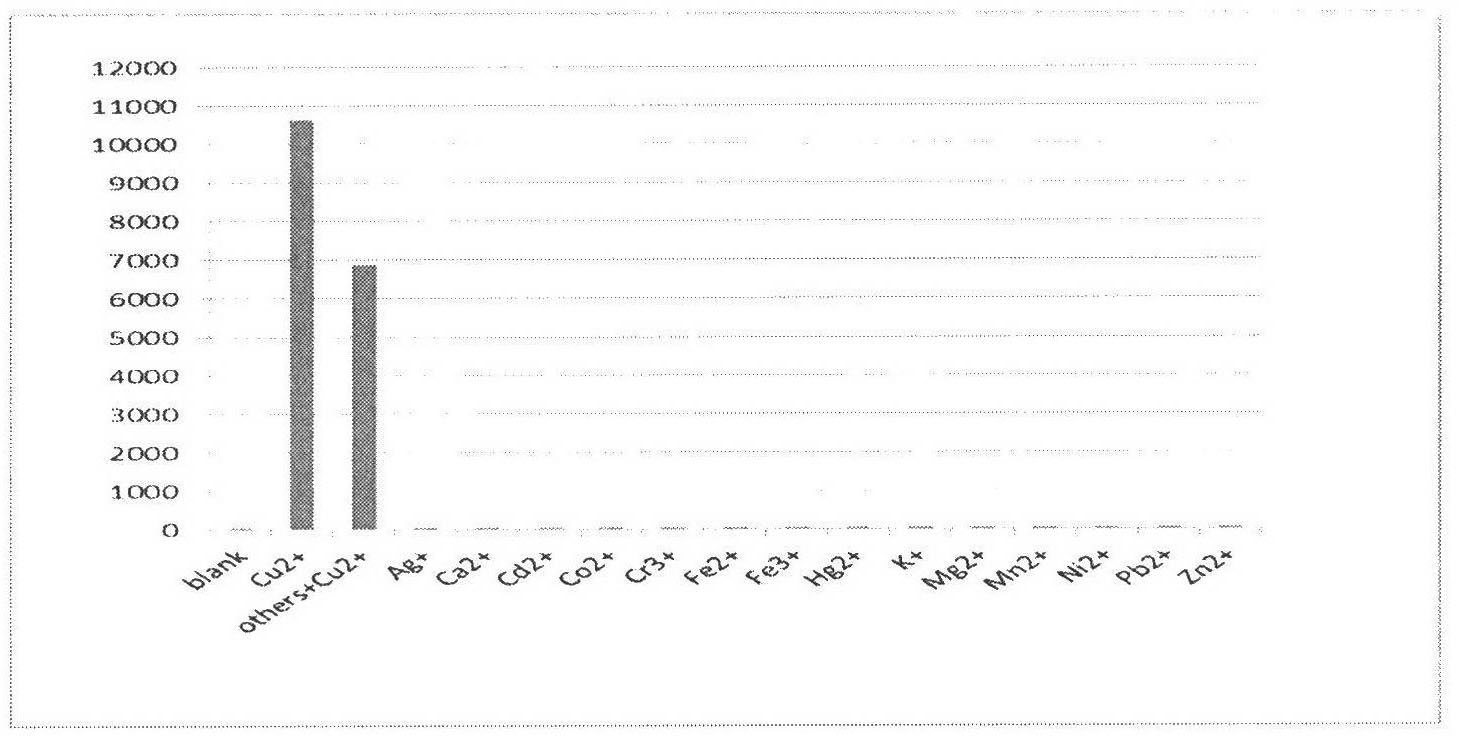Fluorescent molecular probe for Cu2+ detection as well as preparation method thereof and application thereof
A fluorescent probe and molecular technology, applied in fluorescence/phosphorescence, chemical instruments and methods, luminescent materials, etc., can solve problems such as gastrointestinal discomfort, liver and kidney damage, and achieve broad application prospects
- Summary
- Abstract
- Description
- Claims
- Application Information
AI Technical Summary
Problems solved by technology
Method used
Image
Examples
Embodiment 1
[0023] The probe that the present invention relates to diaminomaleonitrile and naphthalimide combination is synthesized by the following method:
[0024] 1) Under nitrogen protection, 1.5g 4-cyano-N-n-butylnaphthalimide, 1.6g aluminum-nickel alloy, 15ml formic acid (85%), reflux (about 100°C) in 5ml deionized water for 2.5 hours, cool Afterwards, neutralize to Ph=6, extract with ethyl acetate, dry over anhydrous magnesium sulfate, perform silica gel column chromatography, eluent petroleum ether: ethyl acetate=20:1, and obtain 4-formyl-nitrogen-n-butyl - Naphthalimide, yield 50%. HNMR (CDCL3, 500HZ, δppm): 10.51(s, 1H,), 9.51(d, 1H, J=11.0), 8.75(d, 1H, J=9.0), 8.68(d, 1H, J=9.5), 8.23(d, 1H, J=9.0), 7.94(t, 1H, J=10.5), 4.20(t, 2H, J=9.0), 1.73(m, 2H), 1.45(m, 2H), 0.99(t , 3H, J=9.0).. 13 CNMR (CDCL3, TMS, 500HZ, δppm): 13.8, 20.4, 30.2, 40.5, 122.8, 127.3, 128.6, 128.9, 129.7, 129.9, 131.3, 131.7, 134.7, 135.5, 163.2, 163.8, 192.8.ESI-Ms for C 17 h 15 NO 3 , (M+H + ):...
Embodiment 2
[0028] Dissolve the fluorescent probe molecule in acetonitrile to prepare a 0.01 mM solution with 0 to 2.8 equivalents of Cu 2+ Titrate the aqueous solution, excited by 360nm light, monitor the change of fluorescence spectrum at 425nm and 522nm. Cu 2+ When the amount of ion is 0, the probe has no fluorescence, and when it is less than 1 equivalent, there is only fluorescence at 522nm ( figure 1 ), when greater than 1 equivalent, there is fluorescence at 425, and the fluorescence at 522nm gradually disappears ( figure 2 ). Firstly, the intramolecular photo-induced electron transfer (PET) process of the probe is blocked, and the light is emitted at 522nm. As the concentration of copper ions increases, there is an intramolecular charge transfer process (ICT), resulting in a wavelength blue shift of 425nm. When adding 1 equivalent of other metal ions to the probe solution, the change is small ( image 3 ).
[0029]In the above, a fluorescence instrument is used to monitor th...
PUM
 Login to View More
Login to View More Abstract
Description
Claims
Application Information
 Login to View More
Login to View More - R&D
- Intellectual Property
- Life Sciences
- Materials
- Tech Scout
- Unparalleled Data Quality
- Higher Quality Content
- 60% Fewer Hallucinations
Browse by: Latest US Patents, China's latest patents, Technical Efficacy Thesaurus, Application Domain, Technology Topic, Popular Technical Reports.
© 2025 PatSnap. All rights reserved.Legal|Privacy policy|Modern Slavery Act Transparency Statement|Sitemap|About US| Contact US: help@patsnap.com



